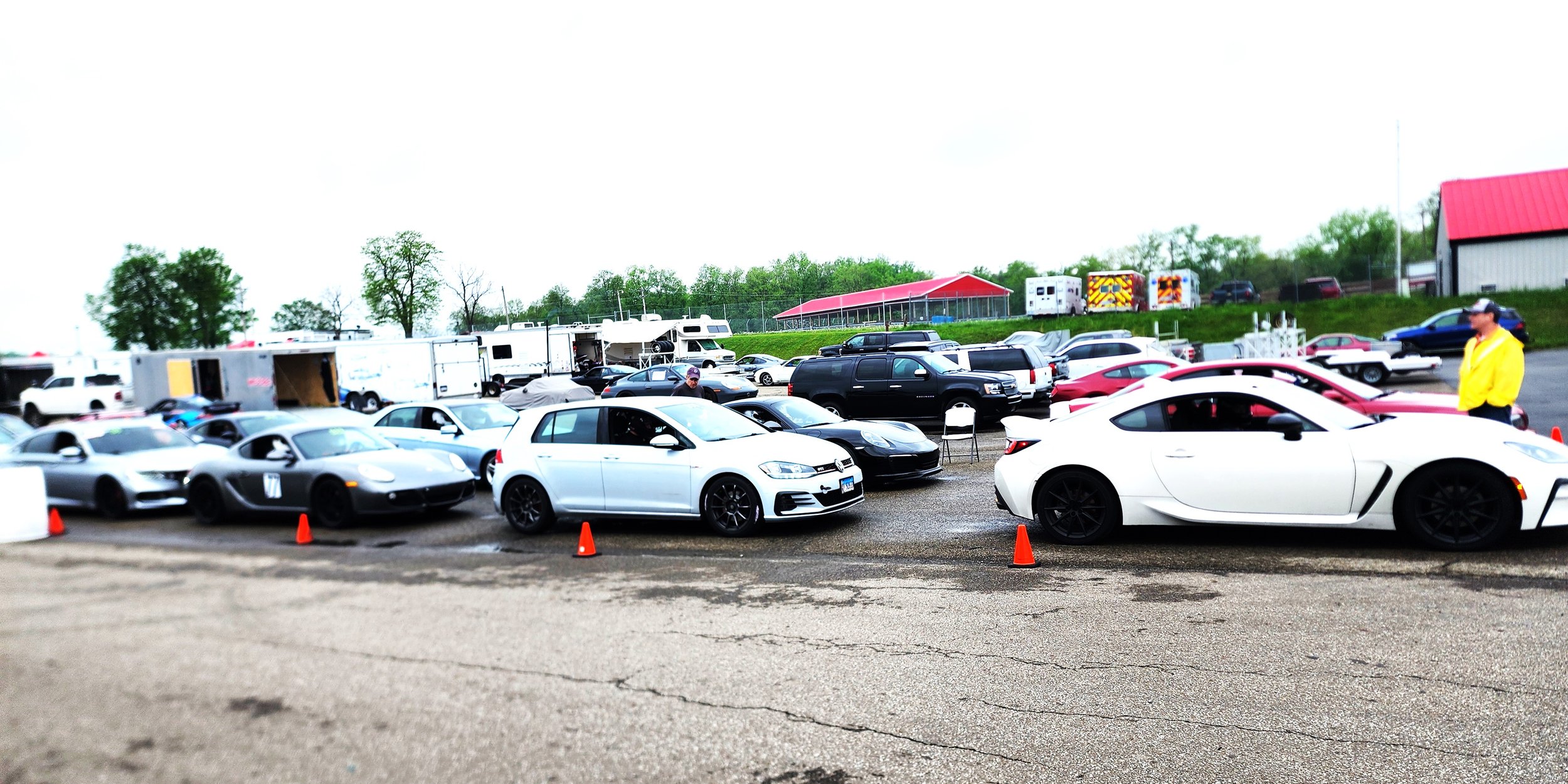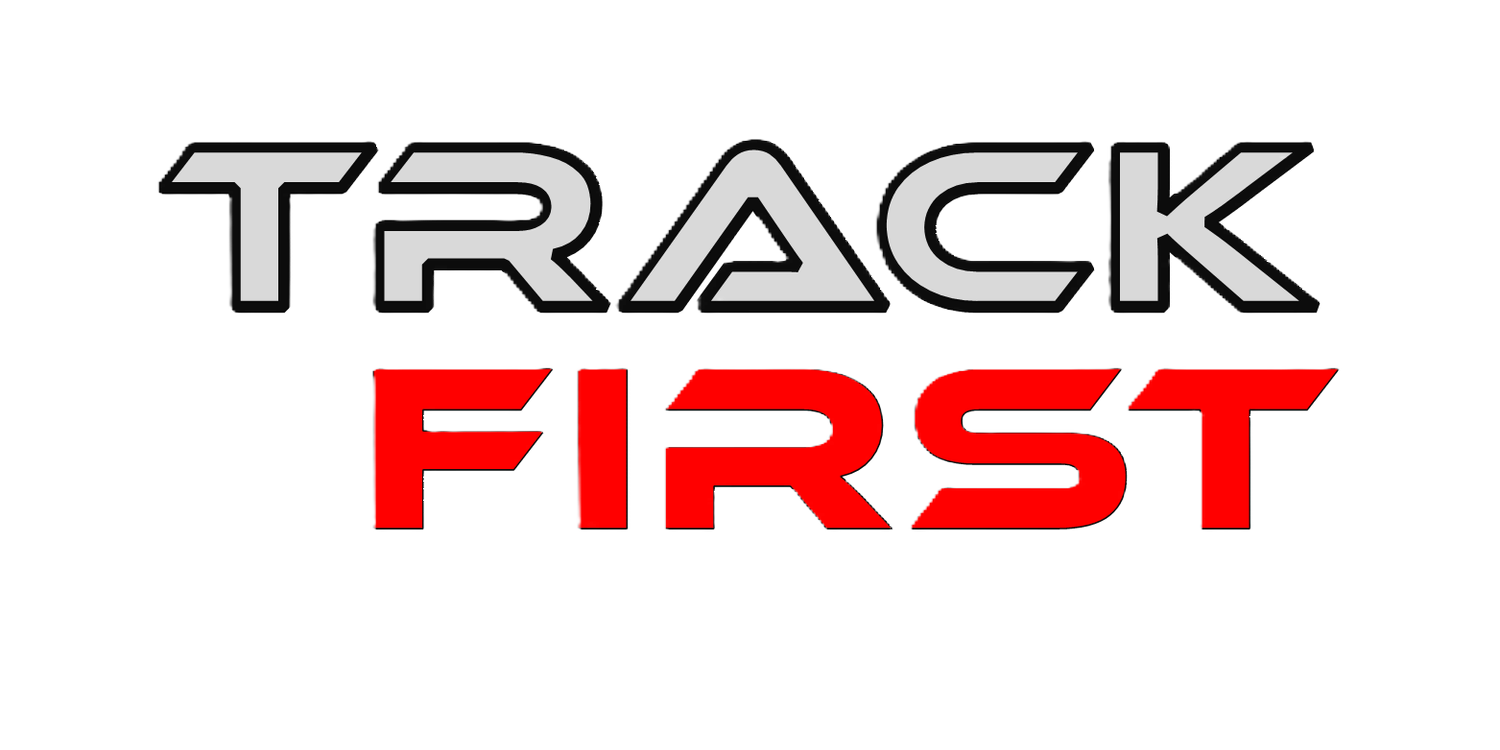
FAQ - your first HPDE
Planning for your first High-Performance Driving Event (HPDE) can be a little overwhelming. We want you to enjoy the experience, so here is a list of FAQ to help you, and your vehicle, be ready for your first day at the track:
Let’s get started…
What is an HPDE? (also called DE)
An HPDE is a High-Performance Driving Education program. Also known as DE (Driver Education) by some groups (such as PCA.) These programs allow drivers to learn their cars, to improve their driving skills, and to experience the thrill of track driving - yet in a controlled environment. The emphasis is on driver education and safety.
Note, drivers who participate in a recognized HPDE or DE program can obtain insurance (see below.) We highly recommend this.
Do I need any prior experience?
No prior experience is required for beginners. HPDEs do offer different run groups based on skill level and prior experience. As a first-timer, you will be asked to enter the event in their novice group.
HPDE novice groups have driving instructors - they will sit in you passenger seat. Learn & benefit from their extensive experience.
Registration
Membership could be required for the group organizing the event in addition to the registration fees.
TRACK ENTRANCE: Most tracks now require pre-registration waiver forms for the event, and this will be asked for at the track’s entrance. It is a relatively simple process, although often forgotten in the registration process - and not always clearly displayed, so search for it.
Wrist bands - the track and the motorsport organization will have separate wrist bands. These must be worn throughout the event, and easily visible.
If you are staying at the track - check the track’s rules. Overnight and electric fees are the norm.
How do I prepare for the event?
First check your group’s requirements. They vary, but commonalities are:-
Current Driver’s License: Valid for the State.
Helmet: Most tracks require Snell-rated helmets (SA2015 or newer).
Roll Bars in convertible cars
Seat belts in good working order
Your car is in a safe operating condition
Clothing: Wear loose, organic long sleeve shirts & long pants - cotton suggested. Open-toed shoes are not allowed.
Car Inspection: Ensure your car is in good condition. Many organizations require you to bring a tech inspection form signed by a professional mechanic.
Note, your helmet, and car will be tech inspected at the track by the group
What should I bring to the track?Clothing: Wear loose, all organic long sleeve shirts & long pants. Open-toed shoes are not allowed.
Shoes: Choose shoes for their comfort, flexibility & pedal sensitivity. Avoid sneakers with thick soles and protruding edges.
Fluids: Bring extra oil, and brake fluid.
Tools: Basic tools for minor adjustments and repairs.
Food and Water: Stay hydrated and bring snacks.
Chair and Shade: A foldable chair plus a canopy or umbrella for comfort and shade. Resting is important.
A tarp, rug or similar to place your items on. Remember all loose items have to be removed from the car. In addition, a will mark your area while you are on the track.
How should I prepare my car?
Tires: Check the condition and pressure. Bring a torque wrench, set correct for your car.
Brakes: Ensure they are in good condition and have plenty of life left. We recommend you bring a second set of brakes - HPDE events are tough on brakes. A common cause for a bad weekend.
Fluids: Check all fluid levels and top them off. Check for leaks.
Brake fluid - a critical fluid for track days - make sure it is fresh.
Battery: Securely mounted and in good condition.
Loose Items: Remove any loose items from the car’s interior and trunk - anything not bolted down.
Lights: Check all you lights and indicators are working.
At the Event - faq
When is the best time to arrive?
It is always best to be an early bird. We recommend you are there when the track opens. Before your first on track driving session, you need to allow time for track registration and tech inspection, finding your garage or a parking spot in the paddock, and then the essential drivers' meeting. It is always a busy time, and can be confusing.
Be aware that many groups offer a previous evening registration and tech inspection. If you can - we highly recommend you take this opportunity. For those who have trailered their car to the track, you should be able to leave your vehicle and trailer securely in the paddock, but first check that the track has an overnight security system.
What is a drivers' meeting?
The first-day driver’s meeting is a mandatory & important meeting. The event organizers present important information, including safety procedures, track rules, the schedule for the day, and more… Every participant must attend, including the instructors.
This will be held early, usually an hour before the first track session - and located close to registration. If you do not know where to go - ask - or follow the direction of the crowd.
At the end of this general meeting HPDE students will be divided into their appropriate HPDE groups. These meetings will be held after the general drivers’ meeting, and the locations are spread throughout the paddock. At these meetings you will be introduced to your group’s leader and then your personal instructor. Appropriate information will be dispensed along with any additional paperwork.
Will there be instructors?
Yes, most HPDEs provide instructors for novice drivers. They will ride along with you and provide guidance on driving techniques and track etiquette. Always listen, respect and benefit from their instruction and experience. Most instructors will have had at least two years of instructing with the group, be experienced with the track and/or a veteran auto sports participant/instructor.
Novice groups are required to ride every session with an instructor. The intermediate group can be a mix. We recommend you do not rush to lose your instructor. Fully benefit from their experience. Remember, your entry fee includes the cost of their instruction.
What should I expect in my first session?
Following your first HPDE group meeting with the introduction to your instructor you will make arrangements where to meet each other before your track session. Instructors are busy, sometimes they have more than one student and, in addition, they have their own track sessions.
Expect the first session to be at a slow pace. Often the first session will be lead-and-follow under yellow flag conditions (no overtaking.)
The focus for the first session will be on learning the racing line, braking points, and safe, designated passing zones.
Sessions last between 15 - 25 minutes. This doesn’t appear long, but it is a proven, appropriate and safe length for novices.
What if I feel overwhelmed?
You will get tired, more tired that you thought. The concentration and trepidation saps energy - but it is normal.
The first track session is often the hardest, but once you have conquered your nerves, you will start to relax and then enjoy the day.
Always rest between sessions and hydrate. Take a break if needed.
If you do not feel ready to go out for any sessions - then don’t.
Instructors and event staff are there to help. Communicate any concerns, and don’t hesitate to ask questions.
Safety and Etiquette
How do I stay safe on the track?
To stay safe on the track listen to your Instructor and benefit from their experience: Follow their guidance closely. Respect their experience and knowledge.
Your instructor will look for repeated smooth & consistent laps. Instructors will not be happy (or impressed) if your focus is purely on your speed and individual lap times. Most instructors will be unhappy that you even know these since it demonstrates you were not consistently looking at the track and/or focusing on your markers.
You need to aim for smooth & consistent cohesive handling of your steering wheel, brakes, and throttle.
Situational Awareness is very import to your safety: you must learn how to be aware of your surroundings and other cars.
Know the flags and be aware of them on the track. You will have been taught their meaning for your group at the beginning of the day. AND, for example, do not presume the red flag flying has an identical meaning with each track group and/or equivalent to what happens in pro-racing.
Track sessions are intense. It is almost impossible to learn all of the track in one session. Often, an instructor will divide the track into sections, then concentrate his/her instruction on one of those sections. Once you understand this section he/she will advance you onto the next section.
For increased safety on the track remember not to focus on any previous mistake. This diminishes your focus from the next challenge. Remember. you have other laps, or sessions, to work on your earlier mistake.
Avoid ‘red mists.’ That’s where you allow emotions to overcome rationality.
What is the proper track etiquette?
In general …
Passing: For novices passing is allowed only in designated passing zones
Your passing another car only happens when signaled by the driver who’s ahead.
Open Passing is only allowed in the senior (solo) designated HPDE or racing groups.
Mirrors: Check your mirrors frequently and let the faster cars pass.
Cool-Down Laps: Use cool-down laps to let your car recover before entering the pits.
After your track session
What should I do after my sessions?
After your session Let your car idle for a few minutes to cool down. Open the hood to help cool the engine.
After our track session inspect your car for any issues and always check tire pressure, and fluid levels. Re-torque the wheels
The relax and reflect on what you learned, and think about the areas for improvement.
Rest, relax, drink fluids and keep cool.
Can I share my experience?
Absolutely! Many HPDE participants enjoy sharing their experiences on forums, social media, and with fellow drivers.
Camaraderie is big in motorsports it is what will bring you back to track.
Miscellaneous
Can I bring spectators and dogs?
Most events allow spectators, but check with the organizer for specific rules. There may be a fee.
Spectators will have to register separately to enter the track, and there may be a fee.
Not all tracks allow dogs. We do not recommend bringing them - track days are busy, noisy & often hot.
Are there any additional resources to learn from?
Plenty - unlimited help
Many groups can connect you with your instructor before the event.
Access: Ross Bentley’s Speed Secrets
Sim Racing - it’s a great resource for track awareness and preparation.
Videos: Look for instructional videos from reputable sources on YouTube.
Forums: Join online communities like TrackJunkies, HPDRE, or specific car club forums.
